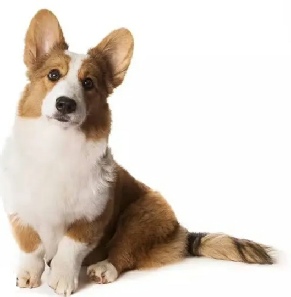Breeders of champion line pedigreed AKC registered Cardigan Corgis.
The Cardigan Welsh Corgi is a small but hardy dog found centuries ago in Wales. He was valued as an affectionate companion, guard, and farm worker and driver of cattle. This dog is considered a shepherd and showing it in AKC is done in the Herding Group.
Read more to learn about the Cardigan Welsh Corgi on the AKC website.
https://www.akc.org/dog-breeds/cardigan-welsh-corgi/
General Appearance: The Cardigan Welsh Corgi is a long, low, fox-like dog with large, upright ears, a bushy tail, moderate boning, and front legs that are slightly bowed around a deep chest. The average size is approximately 12 inches at the shoulders. Females range from 25 to 34 pounds and males from 30 to 28 pounds. The dog’s coat is medium length and double. The Cardigan can come in a variety of colors, to include: brindle (has a wood grain effect), blue merle (black and grey marbled), sable (black hair tips), and black. Blues and blacks can have “points” (cheeks and eyebrows) in either tan (for tri-color) or brindle. White flashings are usual on the neck as a partial or full collar, chest, legs, underparts, tip of the tail, and a blaze on the face. Black masks are acceptable along with some ticking (freckles).
Temperament: The Cardigan’s personality is based on his original life as a companion and farm helper and guardian, which together makes him an outstanding house pet. The Cardigan Welsh Corgi wants to be involved with his family. He is full of fun and devotion to his family, and sensible affection. Some will withhold their favors from strangers until they get to know the newcomer. The Cardigan Welsh Corgi naturally cares for his people. He is an intelligent, alert, and responsible dog. They are expressive and trainable.
Care: The average life span of the Cardigan Welsh Corgi is 12-15 years, provided he is well cared for. Care should be taken with Corgi puppies in jumping down, due to their build. Picking up a Corgi puppy should be done with one hand under their chest behind the front legs and the other supporting their hindquarters. The Cardigan is an active dog but do not overdo activity of an adult Cardigan. They have stamina and love walks and romps, but excessive exercise is not necessary. Care for the Cardigan Welsh Corgi’s coat is easy. It is an all-weather coat and generally stays clean and odorless. Brush once a weak to remove dead hair. Moderate shedding will happen twice a year.

